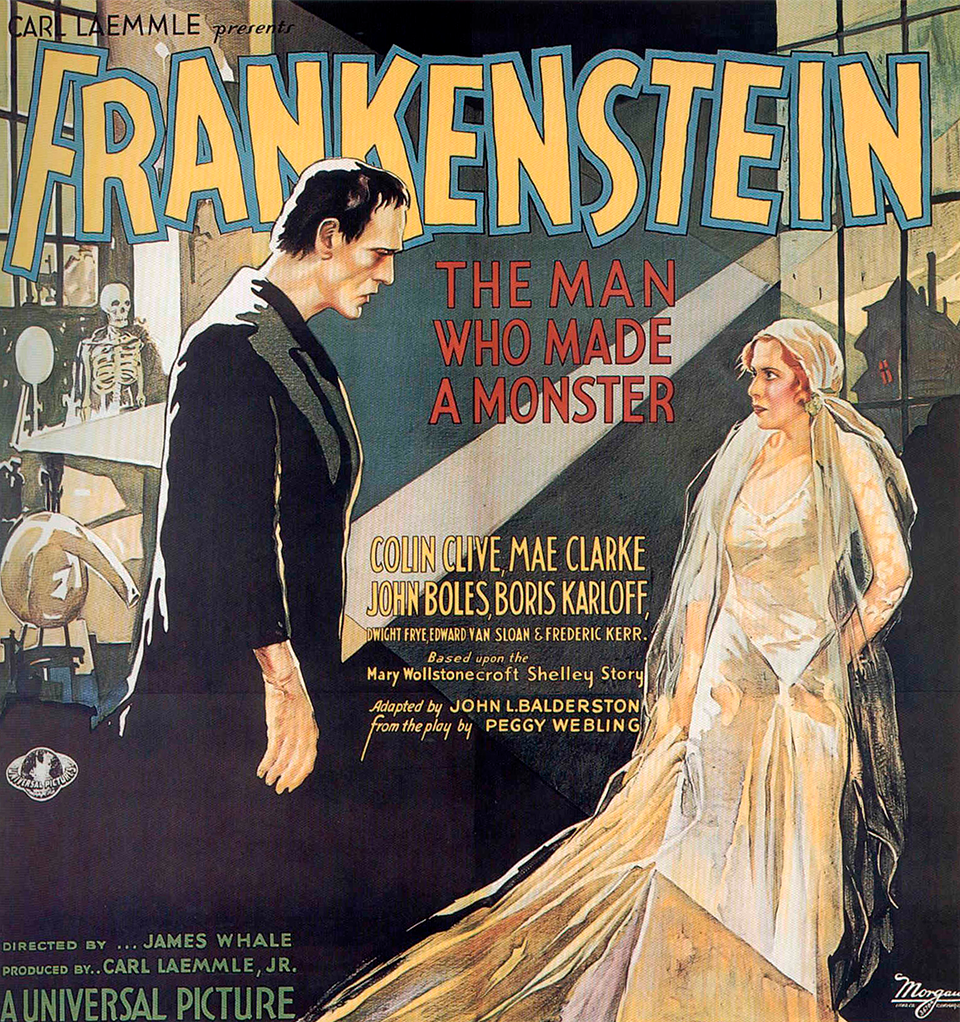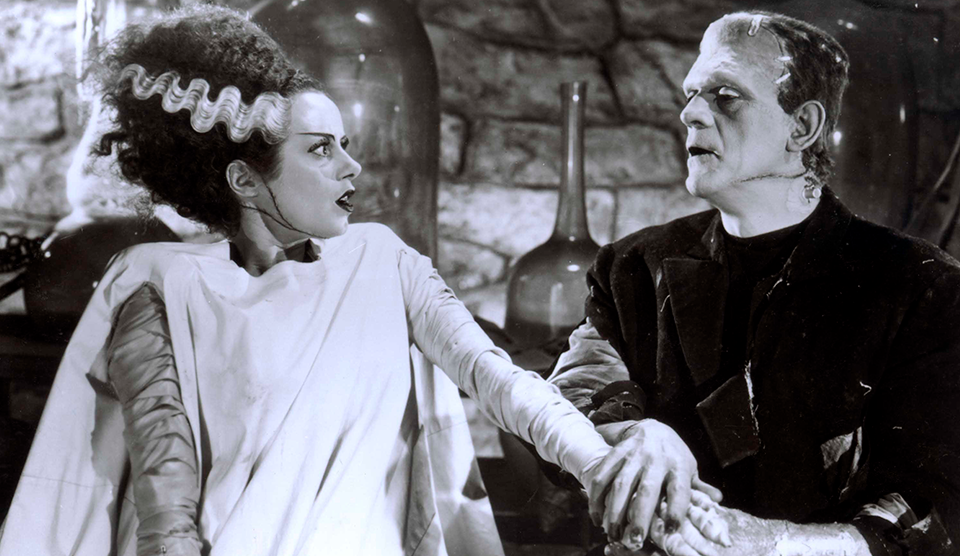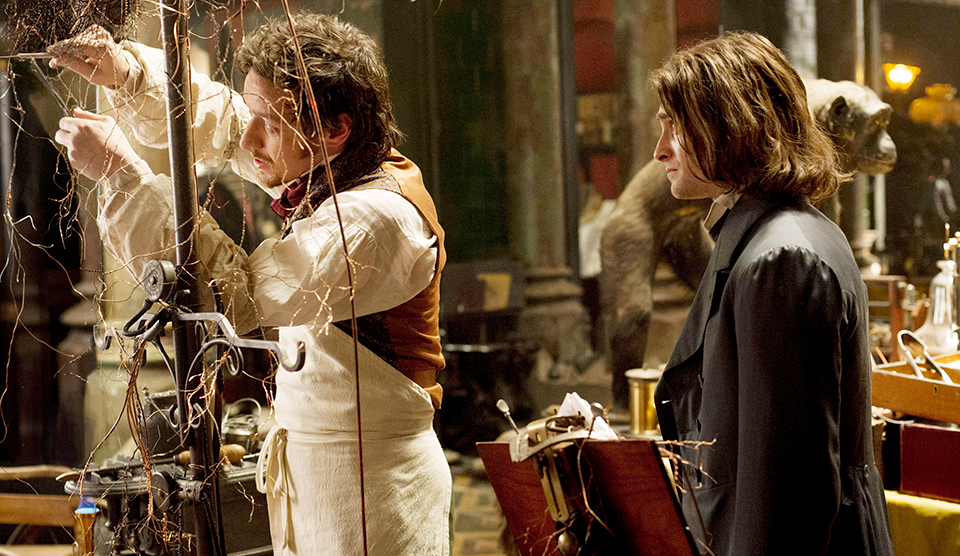- Home |
- Search Results |
- In search of the most authentic Frankenstein movie

Frankenstein (J Searle Dawley 1910)
At only 12 minutes long, the first surviving copy of a Frankenstein film adaptation is a must watch for fans of early cinema. Strangely, Frankenstein seems more like a magician performing a conjuring trick than a methodical scientist. Puffs of smoke billow around him as he throws handfuls of powder into a cauldron; a marionette-like skeleton materialises and bursts into flames; hair and distorted features grow in front of our eyes. This eerie representation of the infamous creature makes it one of the most repulsive and effective in cinema history.
Frankenstein (James Whale 1931)
This Universal Monsters movie arguably gives us the most iconic and globally recognised version of Frankenstein. The neck bolts, heavy brow and rectangular head have become synonymous with The Monster, despite it being a drastic deviation from Mary Shelley’s original vision. The entire look of the film, from the flashes of lightning casting malevolent shadows across the intimidating laboratory, to a hunchbacked sidekick scuttling to and fro accompanied by the megalomaniacal cries of “It’s alive!”, sets the tone for a whole generation of remakes.

The Bride of Frankenstein (James Whale 1934)
This sequel to Frankenstein (1931) goes even more off-script than its predecessor. It begins with an elegant pastiche of the now legendary conversation which sparked the idea of Frankenstein, between Mary, Percy Shelley and Lord Byron. The ensuing plot, involving an additional harebrained scientist and a female mate for The Monster, is undeniably bonkers and culminates in a moving and literally explosive finale. An excellent touch is the casting of Elsa Lanchester, who plays both Mary Shelley and then the ‘bride’, complete with the unforgettable lightning streaked wig.
The Curse of Frankenstein (Terence Fisher 1957)
The still contentious debate over who is the real monster in Mary Shelley’s novel never falls so clearly down on one side as in this Hammer Horror version; Peter Cushing’s portrayal of Frankenstein as an egotistical, ruthless murderer is a revolutionary spin on the classic. Several iconic Hammer trademarks are introduced in this adaptation. Not only is it the first British horror to be shot in colour, amplifying the gore factor with gushing, crimson blood, but we get our first glimpse of horror legend, Christopher Lee. It may not be the most faithful adaptation but it’s certainly one of the most shocking and entertaining.
Mary Shelley’s Frankenstein (Kenneth Branagh 1994)
It may seem as though Kenneth Branagh bothered to read the novel before attempting to recreate it on screen but despite being a fairly faithful Frankenstein adaptation, it veers far more towards camp melodrama, rather than gothic horror. A particularly bizarre moment involves Victor and The Monster (an miserably miscast Robert De Niro) wrestling and struggling with each other amidst a vat of amniotic fluid, making it look more like an episode of ‘Get Your Own Back’ than a depiction of a vital scientific breakthrough. It achieves the dubious accolade of being laughably hammy and instantly forgettable at the same time.

Victor Frankenstein (Paul McGuigan 2015)
This audacious adaptation has the gall to be an amalgam of almost every Frankenstein adaptation to date and yet virtually ignores the plot of the novel entirely. Perhaps the most unusual thing about it is that the focus is on Igor (an ineffectual Daniel Radcliffe) and his bromance with James McAvoy’s eponymous, overzealous scientist. The monster is almost an afterthought. With its massive budget and frenzied, steampunk style, Victor Frankenstein is a madcap but enjoyable ride.